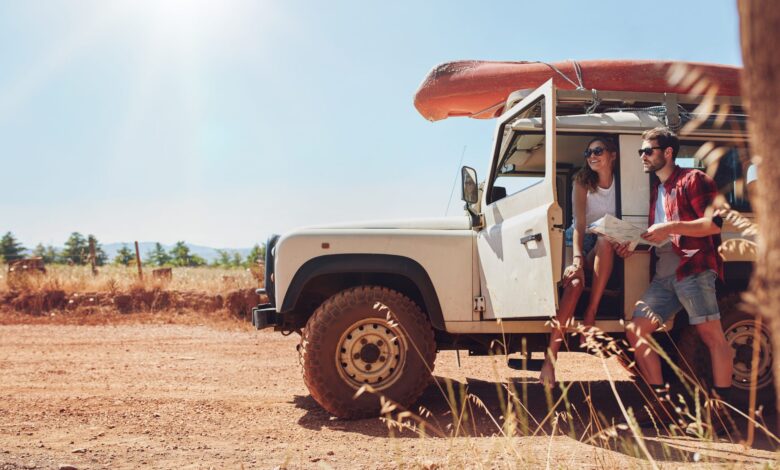
28 Jun Travel Pillow And More: 5 Essentials For A Long Road Trip
Going on a long road trip is certainly fun and exciting. However, because of the distance you’ll be covering, you’ve got to condition your body to stay inside the car, satisfied and comfortable for an extended time. Depending on how many stops you’re going to make throughout the trip, you may even have to find ways to keep yourself happy and occupied for many hours before you can get out of the car, breathe, eat, and stretch your legs.
For adults, this entails a lot of preparation, which is especially necessary when you’re travelling with young children. If staying seated in a vehicle for a long time can take a toll on your body, all the more is this the case with young kids, who may find it hard to stay in one place and be strapped to their car seat or wear a seatbelt.
Fortunately, there are many items on the market that you can bring with you during your trip to give you a pleasant experience from start to finish. With these, you don’t have to dread road trips no matter how long they take, nor will you feel as though you’re wasting hours and hours in your car.
Before you hit the road and head to your destination, make sure to bring these essentials in order to have the best, safest, and most comfortable long road trip every time:
1. Travel Pillow
One of the most important things you should never forget to bring with you when travelling by road is a travel pillow. This isn’t only for road trips but also for long-haul flights. Among all the reasons you should have one, comfort is the most prominent purpose of this particular item.
If you’re still on the fence about whether you should get a travel pillow, here’s why it’s a good buy for travellers young and old alike:
- It’s the perfect travel companion. Travel pillows are aptly named as such because they’re compact enough to be taken pretty much anywhere. When you’re on the road for a long time, you’ll eventually experience some pain and tension in your neck, particularly if you doze off and both your neck and head don’t have adequate support. A travel pillow provides the right amount of cushion you need to take a nap in the car without worrying about discomfort.
- It helps prevent fatigue and stiff neck. Two of the most common experiences you may have after a long journey are stiff neck and fatigue. If you’re someone who’s often in the back seat of the car with other passengers, surely you’ve come across the situation where you felt cramped and found it difficult to get into a comfortable position.
With a travel pillow that’s the perfect size for your head and neck, you no longer have to keep twisting and moving around trying to figure out where to rest your head.
- It can possibly reduce snoring. If you’re travelling with your family or even your friends, then you may be able to get away with snoring. But if you’re in a van or a bus with strangers, it can be embarrassing to fall asleep and be woken up by other passengers telling you that you’re making a lot of noise.
If you know that you’re the type who snores, then add a travel pillow to your list of travel must-haves. This can keep your neck and spine aligned, which may help minimise snoring.
To be able to enjoy such benefits, however, it’s equally important to choose a travel pillow of high quality. While there are numerous options available in physical and online stores, not all of them can give you the results you’re after.
With that said, these are some of the factors you have to consider when selecting a travel pillow:
- Texture: Your travel pillow should have a smooth texture so you won’t have any problems resting your head on it for an extended period. Also, you wouldn’t want to wake up after an hour or so with marks on your skin because of your pillow’s texture.
- Firmness: Why else would you bring a travel pillow if it’s not going to give you the kind of comfort you want? When looking into different travel pillows, either test them or find out if their firmness can be adjusted in any way. In doing so, you’ll be purchasing the best travel pillow according to your personal standards of comfort.
- Size: Your travel pillow should be light and small enough for you to have in the car or pack in one of your bags. It has to adequately support the weight of your head and neck without getting in the way of other passengers sitting beside you in the vehicle.
To get a good idea of what kind of travel pillow you should aim for, watch this video:
2. Gadgets And Accessories
If you use your gadgets often, there are devices you may not want to go without during your road trip. Phones and tablets can be for entertainment purposes if everyone apart from the driver is already sleeping or if the scenery outside has gotten dull. You can also allow your kids to use them for a while should they start getting restless. Of course, they can help you in other aspects such as navigating unfamiliar areas and looking for specific establishments.
Since you’ll be inside a moving vehicle, it’s advisable to get the following accessories that would make using your gadgets during the road trip more convenient:
- Phone mount: As its name implies, this is where you can place your phone while you’re driving. Take note, however, that having this doesn’t mean you should answer text messages and calls while you’re behind the wheel. Rather, you should utilise a phone mount if you’re going to use your mobile for navigation.
- Headrest mount: If a phone mount is for the driver and the person in the passenger seat, a headrest mount is for those who are sitting in the back. It provides a safe place to set up your gadget and keep it steady so you can watch some videos or movies.
- Portable power bank: If your car has USB ports, then you can use them to charge your phone. But should you have a lot of passengers in the car, the number of ports available may not be enough, so it pays to bring your own portable phone charger or power bank.
When you’re on the road or travelling in general, you’ll likely rely on your mobile phone more than usual. You may need it to communicate with relatives and friends back home or in your target destination, take photos along the way, and check your social media accounts. It can also serve a functional purpose if you have apps for navigation, weather updates, and traffic information, among others. That’s why it’s a must to keep your battery charged throughout the trip.
- Phone or camera tripod: If you’re on your own, then who’ll help you take photos of yourself in amazing spots you discover on your journey? Having a tripod is an excellent solution. If you enjoy going on solo road trips, then it’s a great idea for you to invest in a sturdy and functional tripod.

3. Important Documents And Identification Cards
Depending on where you’re going and the entry requirements in your destination, you’ve got to have the right documents and identification cards with you.
The most crucial one to bring is your driver’s license. Be sure it’s up to date and not expired. Go through your glove compartment as well to ensure that your car registration certificate is there. Other documents you need to have include but aren’t limited to the following:
- A copy of your car insurance policy: Even if you do everything you can to stay safe while on the road, there’s no way for you to determine when an accident will occur. After all, there’ll be reckless drivers everywhere you go, and unexpected circumstances such as terrible road conditions might lead to an auto collision as well. In the event that you get into one, you’ll need to contact your car insurance provider, so it’s a prudent idea to bring a copy of your policy with you, more so when you know that the journey ahead of you will be a long one.
- Your car manual: This is something that should always be inside your glove compartment. Your car manual is going to come in handy when you encounter any problems with your vehicle that need to be addressed. These could be anything from issues with starting your car to headlights that refuse to turn off.
- Your family’s identification cards: If you’re travelling with your kids, see to it that you have their identification cards and copies of their medical history. This way, if you have to take them to the emergency room anytime during your trip, the hospital staff will know right away how best to treat your child.
4. Safety Essentials
Because you’re going on a long journey, there are certain items you’ve got to be mindful about bringing with you for the sake of safety. The following will prove invaluable in the event of an emergency, especially if the nearest auto repair shop or medical facility is still a long way off:
- Emergency car kit: This should include tools that’ll allow you to repair your car in case it breaks down all of a sudden. That kind of situation might occur in a place where help is far away or there aren’t any people around, so you should at least know the basics of fixing your car such as changing a flat tire.
Your emergency car kit has to include things like a flashlight, a spare tire, jumper cables, and signal flares.
- Portable jump starter: How healthy is your car’s battery? If it runs out or turns problematic, typically you can charge this with the help of another car. But if there isn’t anyone around willing to help you out, then you’re on your own.
Fortunately, technology has paved the way for the development of portable jump starters. It may be a pricey investment for some, but if you frequently go on road trips, then it’s important for you to have this in your car.
- First-aid kit: There are so many first-aid kits you can now buy at supermarkets, hardware stores, and pharmacies, so there’s no reason for you not to keep one in your car. They may come with everything from gauze sheets and a pair of scissors to adhesive bandages and iodine pads. With a preassembled kit, all you have to do is to add any personal medication for yourself or any of your family members. For example, you can include an adrenaline auto injector in the kit if your child has severe allergies. Also, it would be a good idea if you go online and get your first aid certification. That way, you will feel more suitably prepared for any case of emergency on the road.
5. Spare Money
It’s true that travelling with your credit card is the safest option you can go for. In case it gets stolen during your road trip, you can call your credit card provider and ask them to put a hold on it.
However, cash is still king. There are some areas or establishments where cash is preferred or card payment is unavailable. Therefore, it’s best to have spare cash with you so you can buy food and cover other essentials in case of an emergency.
Conclusion
With all the items in this list, you can make your road trip as convenient and stress-free as you want it to be. Remember, however, that the list here isn’t meant to be exhaustive or all-encompassing. As you start packing for your journey, if you can think of other items that you consider important for you, your family, or even your vehicle, then feel free to bring them with you as well.
What’s more, if there are items in the list above that don’t resonate with your preferences, then you can do away with or replace them. This article is merely a guide to give you a head start on deciding what to bring for your long road trip, so be sure to tailor your essentials to your needs and lifestyle.






